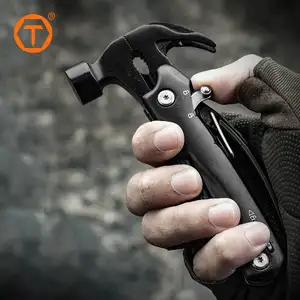A chipping hammer is a handheld tool commonly used in construction and metalworking for breaking, chipping, or scaling various materials. It features a small and lightweight design, making it easy to handle. Chipping hammers are equipped with a chisel-like bit on one end and are typically powered by compressed air.
Features of a Chipping Hammer
Chipping hammers are often powered by compressed air, making them pneumatic tools. This design provides high-impact force while keeping the tool lightweight. The business end of a chipping hammer features a chisel-shaped bit. This bit is designed for chipping away or breaking materials such as concrete, metal, or stone. The portability of concrete chipping hammers makes them easy to handle and maneuver. This is especially important for tasks that require precision or extended use. These hammers are built with durability in mind, as they are often used for heavy-duty applications. The construction typically includes rugged materials to withstand the forces generated during operation. The handle is designed for comfortable grip and control. Some chipping hammers may have a shock-absorbing mechanism to reduce vibrations and operator fatigue.
Uses of a Chipping Hammer
Chipping hammers are commonly used in construction for breaking and removing concrete. They can be employed to chip away old or unwanted concrete during renovation or demolition projects. In metalworking, chipping hammers are used to remove weld slag, scale, or excess metal. They can help clean and prepare metal surfaces before welding or other fabrication processes. Artisans and stone masons use chipping hammers for carving and shaping stones. The precision and control offered by the tool make it suitable for detailed work. Electric chipping hammers are effective for small-scale demolition tasks. They can be used to break apart bricks, tiles, or other materials in renovation or construction projects.
The chisel bit is useful for removing scale, rust, or old paint from metal surfaces. Chipping hammers are commonly employed in surface preparation before painting or coating. Chipping hammers find applications in various maintenance and repair tasks where the removal of old or damaged materials is required. Chip hammers are versatile tools in the construction industry. They can be used for tasks ranging from breaking up old structures to detailed work requiring precision.
How to Use a Chipping Hammer
Before using a chipping hammer, wear the necessary personal protective equipment, including safety glasses or goggles, hearing protection, and work gloves. Choose the appropriate chisel bit for the task at hand. Different chisel bits are designed for specific applications, such as pointed bits for breaking concrete or flat bits for scaling and surface preparation. If working on a vertical surface, secure the material to prevent it from moving during operation. Use clamps or other appropriate methods to ensure stability. Grasp the welding chipping hammer with both hands. Hold the tool firmly, with one hand on the handle grip and the other on the secondary handle (if equipped). Maintain a comfortable and balanced stance. Position the chisel bit on the material surface where one intends to begin chipping. Start with the chisel perpendicular to the work surface.
Start the chipping hammer and apply pressure gradually to the chisel. Allow the tool to do the work and avoid excessive force, as it may reduce control and efficiency. Use a controlled chipping motion, moving the chisel across the material surface. Adjust the angle and direction of the chisel as needed to achieve the desired results. Work systematically, moving the chisel across the material in a logical pattern. This ensures that one covers the entire area efficiently. Maintain control of the chipping hammer at all times. Avoid overreaching, and be aware of the tool's vibrations. Use the chipping hammer to enhance control if it has a secondary handle. Once one has completed the chipping task, turn off the chipping hammer and disconnect the air supply (if applicable).











































 浙公网安备 33010002000092号
浙公网安备 33010002000092号 浙B2-20120091-4
浙B2-20120091-4